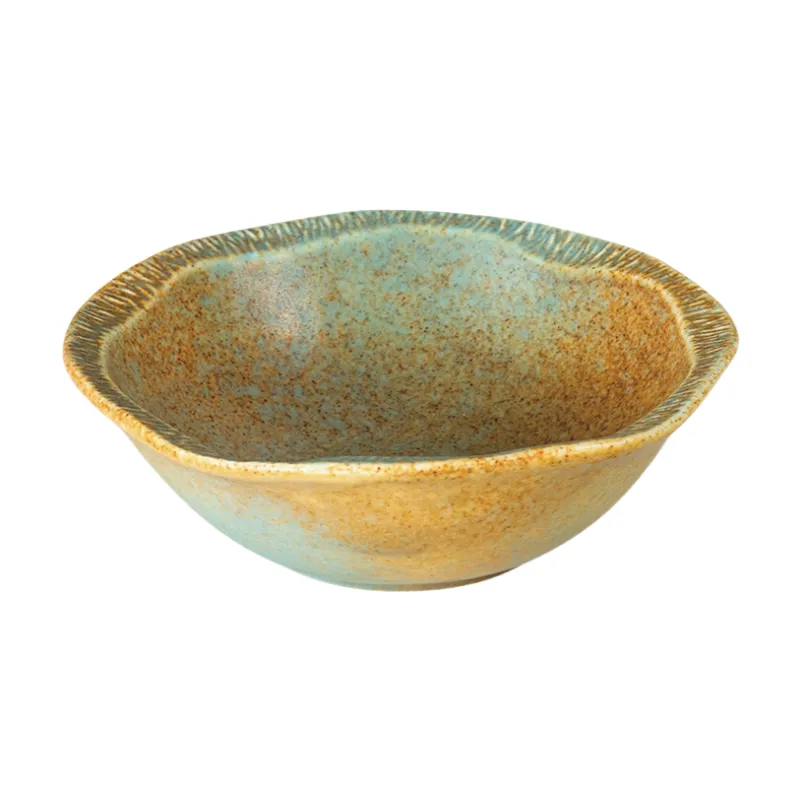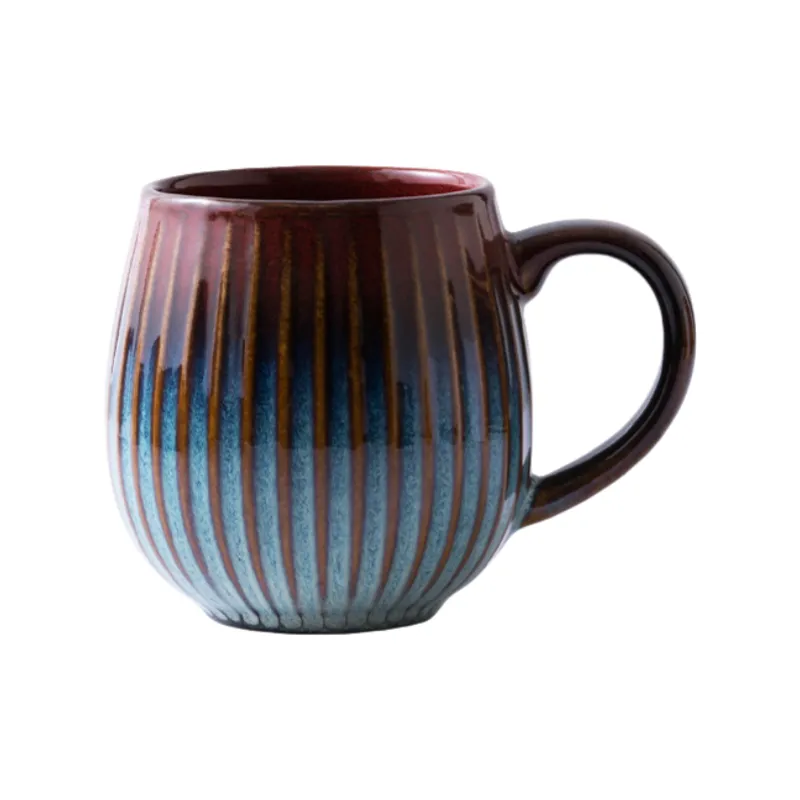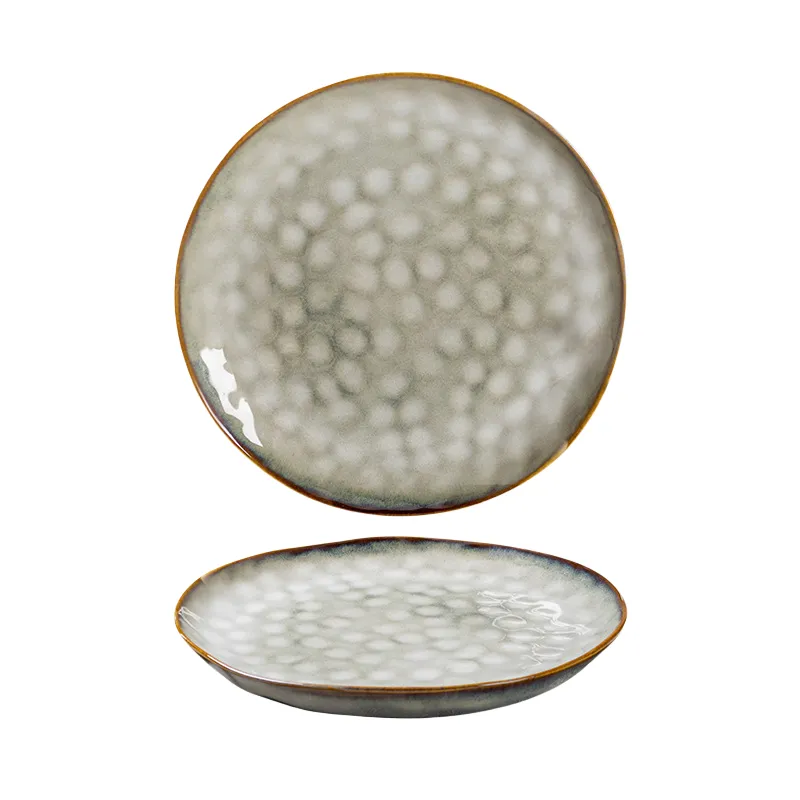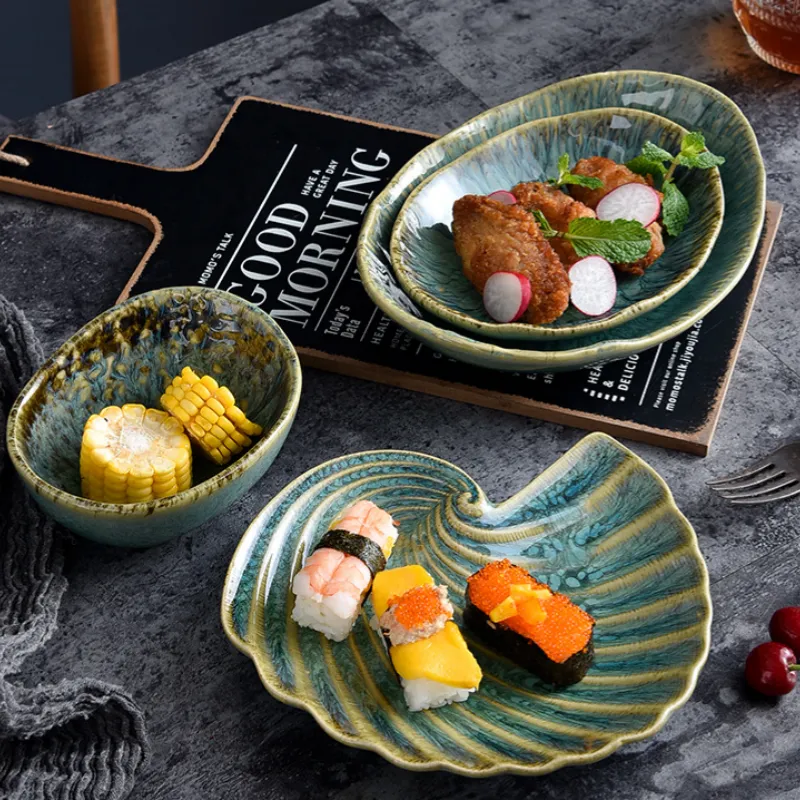What is reactive glazed ceramic dinnerware?
Before understanding a new trend, we need to know its definition.
It also called kiln transformation, refers to the unexpected changes in glaze color and texture caused by the chemical composition of the glaze, the atmosphere (oxidation/reduction) inside the kiln, and temperature fluctuations during the high-temperature firing process of ceramics. Unlike controllable standardized glazing, kiln transformation embraces uncertainty – metal oxides flow, crystallize, or vaporize in flames at 1200-1350 ° C, ultimately forming fantastical effects such as lava flow, twinkling stars, or frozen flowers.
The production of kiln transformed ceramics is a game of precision calculation and accidental surprises, with key steps including:
- Preparation of tire soil:Choose purple clay with high iron content (such as Henan Yuzhou Jun porcelain clay) or kaolin, and manually pull the billet to ensure that the body is uniform and can withstand kiln deformation tension.
- Glaze preparation:Mixed metal oxide glaze: copper oxide (red/purple), cobalt (blue), iron (amber), titanium (crystalline effect).The use of layered glaze application methods such as immersion glaze, brushing glaze, or spray glaze will affect the color development layer due to differences in glaze layer thickness.
- Kiln design:According to the kiln structure, the placement of objects is planned, and the fire marks and ash falling effects in different areas of the firewood kiln vary greatly.Use a box bowl to isolate individual works and control the influence of the atmosphere on them.
- Burning and atmosphere control:Oxidation vs Reduction:Oxidation flame (sufficient oxygen): generates stable monochrome glaze of celadon type.Reduction flame (oxygen deficient environment): triggers the reduction reaction of metal oxides, giving birth to kiln transformed glazes such as Jun kiln blue and cowpea red.Temperature curve regulation: Rapid cooling (quenching) can produce cracking, while slow cooling promotes crystal growth.
- Kiln treatment:Clean up the natural gray glaze attached to the glaze surface and enhance the primitive wildness of the kiln texture.Polish or wax the instrument surface to highlight the artistic conception of “natural kiln transformation”.
Kinl culture production area in China
China is the source of kiln culture, including Jun porcelain from Henan, Jianzhan porcelain from Fujian, daily-use porcelain from Jingdezhen, and ceramic tableware from Chaozhou, the porcelain capital. Coincidentally, Myoung Ceramics is located in Chaozhou.We specialize in producing kiln style tableware, including dishes, plates, cups, and kitchen tools.






The essence of kiln transformed ceramic tableware technology
The essence of kiln transformation technology is a poetic rebellion against the precision of industrialization, and a contemporary pursuit of letting nature take its course.
At the moment when the Jun kiln craftsmen sent the raw materials into the dragon kiln, a dance with flames began – one had to be well versed in the nature of fire and accept the final judgment of nature with equanimity. From the “Jue Zun” in Song Huizong’s calligraphy case to the wood fired coffee cup in Silicon Valley geeks’ homes, the beauty of kiln transformation always reminds us that true luxury does not lie in perfection, but in each object being sealed with an irreplaceable flame legend, and that each object is a unique existence.
In this era of pursuing efficiency, kiln turned ceramics are like slow paced poems, inviting us to re appreciate the philosophy of “chance”: the most touching creations often arise from the subtle balance between control and indulgence.










